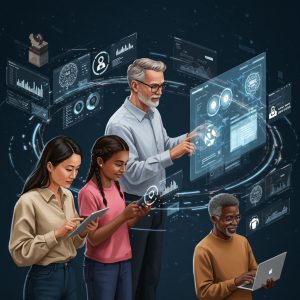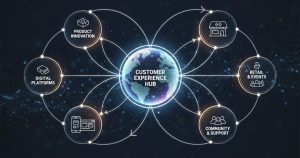Omnichannel Personalization: Crafting Seamless Customer Experiences Across Touchpoints
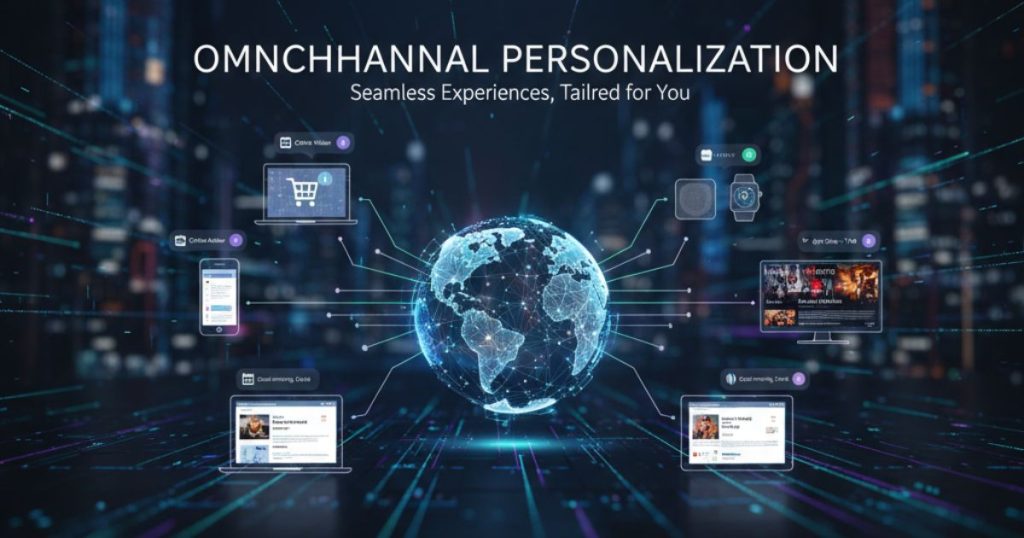
Customers today expect brands to understand their needs across every channel. They want personalized experiences whether they browse products on a mobile app, visit a physical retail store, or interact on social media platforms. When experiences feel disconnected, customers lose trust and brand loyalty declines.
Omnichannel personalization solves this problem by connecting all touchpoints into one unified customer journey. It uses customer data, behavior patterns, and real-time insights to deliver consistent and relevant interactions across email marketing, e-commerce sites, mobile apps, chatbots, digital ads, and in-store experiences. This approach helps brands build stronger customer relationships, increase engagement, and drive higher conversions.
In this guide, you will learn why omnichannel personalization is important, how to implement it using tools like CRM systems, CDPs (Customer Data Platforms), AI-driven recommendation engines, and marketing automation, and which KPIs to track for success. You’ll also find practical strategies to create seamless, personalized experiences that delight customers at every stage of their journey.
Why Omnichannel Personalization Matters?
Traditional marketing channels worked in silos. TV ads, email campaigns, print promotions, and in-store offers rarely shared customer data. Omnichannel marketing removes these silos and creates a unified customer journey across all touchpoints. Personalization then uses real-time data, customer profiles, and behavioral insights to deliver tailored messages, product recommendations, and relevant offers.
Higher Engagement: Personalized content increases clicks, open rates, and user interactions across mobile apps, websites, social media, and email.
Greater Loyalty: Customers feel valued when brands remember their preferences, purchase history, and browsing patterns on every channel.
Improved ROI: Smarter targeting reduces wasted ad spend, boosts conversion rates, and strengthens overall marketing performance.
Omnichannel personalization helps brands deliver consistent experiences across CRM systems, CDPs, e-commerce platforms, customer support, and physical stores. It turns data into meaningful moments that enhance satisfaction and long-term loyalty.
Understanding Personalization in an Omnichannel Context
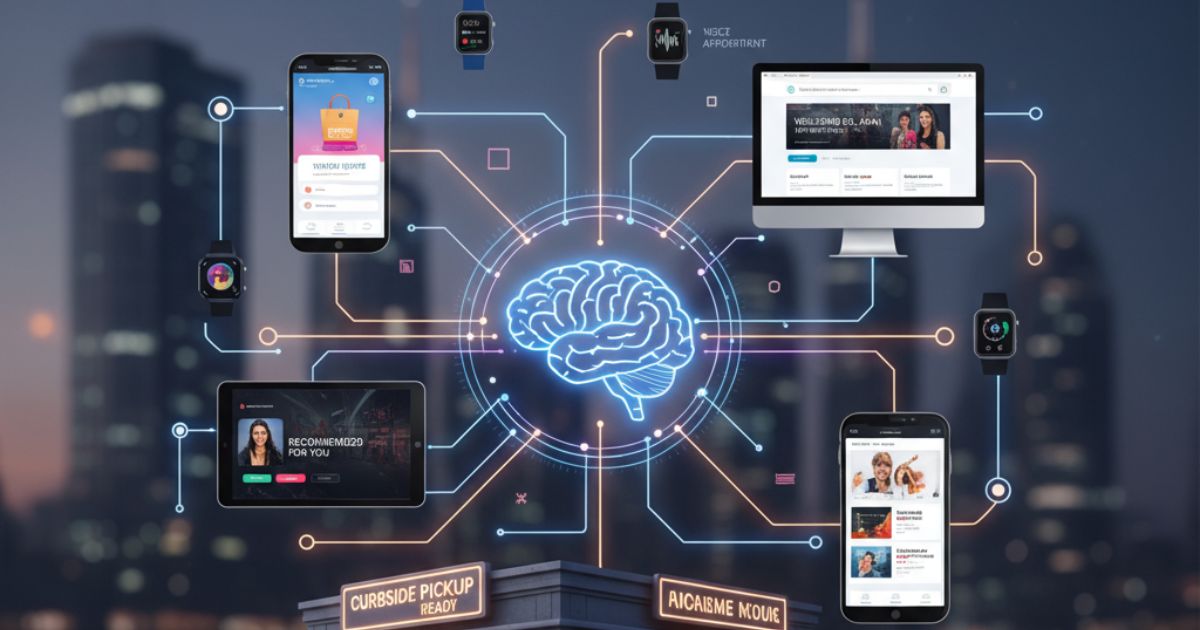
Personalization uses customer data to tailor content, offers, and experiences for each individual. In an omnichannel marketing system, personalization must stay consistent and coordinated across every touchpoint.
- Digital Channels: Websites, email campaigns, SMS messages, social media platforms, and mobile apps.
- Physical Spaces: Retail stores, pop-up events, in-store kiosks, and showroom interactions.
- Third-Party Platforms: Online marketplaces, affiliate networks, partner apps, and external digital ecosystems.
To deliver this level of personalization, brands need a single customer view. This requires unifying data streams from CRM systems, CDPs (Customer Data Platforms), analytics tools, POS systems, and loyalty programs. After this, brands can apply smart segmentation, dynamic content, and AI-driven recommendations that adjust in real time. This creates seamless, relevant experiences across the entire customer journey.
Key Steps to Implement Omnichannel Personalization
1. Collect and Centralize Customer Data
Use a Customer Data Platform (CDP) to bring all customer data into one place. Combine website interactions, CRM records, purchase history, POS data, social media engagement, and in-store transactions. A unified customer profile helps you understand the full customer journey across all channels.
2. Define Audience Segments and Personas
Create segments using behavioral, demographic, and psychographic data. Group customers by browsing patterns (like cart abandoners), product interests (such as eco-conscious shoppers), or lifecycle stages (first-time buyers vs. repeat buyers). These segments help you deliver more relevant content and offers.
3. Develop Dynamic Content Templates
Build dynamic templates for email, SMS, mobile push, and digital ads. Use variables like customer name, location, browsing history, and personalized product recommendations. Make sure your CMS, CDP, or marketing automation platform supports conditional logic and real-time content updates.
4. Orchestrate Cross-Channel Journeys
Plan the ideal customer journey for each segment. For example, a loyalty program member might get an SMS about expiring points, a personalized email with product ideas, and an app push notification with an exclusive reward. Use journey orchestration tools to sync messaging across channels.
5. Test, Learn, and Optimize
Run A/B tests on subject lines, images, offers, and calls to action. Use multivariate testing to find the best creative combinations and timing. Continuously improve segmentation rules, recommendation logic, and channel mix based on analytics and performance data.
Technology and Tools for Success

A seamless omnichannel personalization strategy depends on an integrated and flexible tech stack. Each tool plays a key role in delivering consistent, data-driven customer experiences across all channels.
Customer Data Platform (CDP): Unifies customer data in real time. Creates a single customer view by connecting CRM data, website events, app activity, purchase history, and in-store interactions.
Marketing Automation: Automates workflows and sends dynamic messages across email, SMS, mobile push, and digital ads. Supports journey orchestration and real-time triggers based on behavior.
Content Management System (CMS): Manages website content, landing pages, and email templates. Uses personalization tokens and dynamic fields to deliver tailored experiences to each user.
Analytics and Business Intelligence Tools: Tracks campaign performance, customer behavior, attribution, and conversion trends. Helps marketers make data-driven decisions.
AI and Machine Learning: Powers predictive analytics, personalized product recommendations, dynamic pricing, and real-time content optimization. Enhances engagement and improves marketing ROI.
This integrated ecosystem enables brands to deliver consistent, personalized experiences across web, mobile, social, and physical environments.
Measuring the Impact of Omnichannel Personalization
Use clear KPIs to measure, evaluate, and improve your omnichannel personalization strategy. These metrics help you understand customer behavior and the effectiveness of personalized experiences across all touchpoints.
Engagement Rate:
Tracks click-through rates, open rates, and interaction levels across email, SMS, mobile apps, and website content. Higher engagement shows that your personalized messages are relevant.
Conversion Rate:
Measures purchases, sign-ups, and form completions driven by personalized campaigns. Strong conversion rates indicate effective targeting and well-timed offers.
Average Order Value (AOV):
Monitors changes in AOV for customers who receive personalized recommendations, cross-sell offers, and up-sell prompts.
Customer Lifetime Value (CLV):
Evaluates long-term revenue growth from customers who experience consistent and personalized journeys across digital and physical channels.
Churn Rate:
Tracks reductions in unsubscribes, cart abandonment, and inactive users. Lower churn signals better personalization and stronger customer satisfaction.
These metrics help brands optimize content, improve targeting, and refine their omnichannel marketing strategy for sustained growth.
Challenges and Best Practices
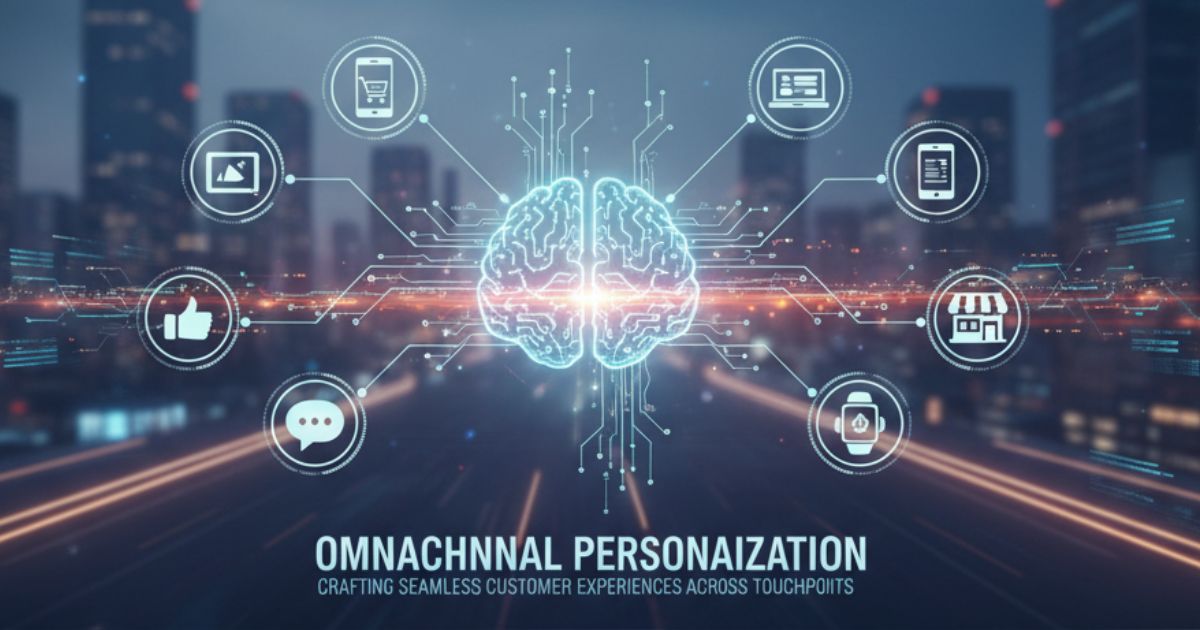
Implementing omnichannel personalization can be challenging, especially for brands with fragmented systems and diverse customer touchpoints. Here are the most common hurdles and the best ways to overcome them.
Data Silos:
Break down technical and organizational barriers that separate customer data. Align marketing, sales, support, and IT teams around a single customer view. Use CDPs, CRM integrations, and unified data pipelines to centralize information.
Privacy Compliance:
Follow data protection laws such as GDPR, CCPA, and other global privacy regulations. Collect explicit customer consent, explain how data will be used, and provide simple opt-out controls. Respect user privacy while maintaining personalization.
Over-Personalization:
Avoid making customers feel monitored or uncomfortable. Set frequency caps, limit repetitive recommendations, and offer preference settings. Keep personalization helpful, not intrusive.
Integration Complexity:
Start with small pilot projects rather than full-scale deployments. Use APIs, middleware, and pre-built connectors to integrate platforms step by step. Gradually expand your tech stack as each system becomes stable and aligned.
Following these best practices helps brands deliver consistent, respectful, and scalable personalized experiences across every touchpoint.
Conclusion
Omnichannel personalization is no longer optional—it’s essential for brands that want to create seamless, relevant, and future-ready customer experiences. As customer behavior shifts toward faster, frictionless interactions, Zero-Click Marketing becomes a natural extension of this strategy. When you deliver personalized value directly on the platforms customers already use—search engines, social feeds, AI assistants—you reduce friction and make engagement effortless.
By centralizing data, defining clear segments, orchestrating personalized journeys, and optimizing your content for zero-click environments, you ensure that your brand stays present even when customers don’t visit your website. Start small, test continuously, and scale your personalization efforts as they mature. The result is a unified marketing ecosystem that feels simple for the customer and highly effective for your business—driving stronger engagement, loyalty, and long-term revenue.
FAQs
What is omnichannel personalization?
Omnichannel personalization is the practice of delivering consistent and relevant customer experiences across all channels—websites, apps, stores, email, and social media—using unified customer data.
Why is omnichannel personalization important for brands?
It helps brands build trust, improve engagement, and increase conversions by ensuring every touchpoint feels connected and personalized.
How does omnichannel personalization work?
It uses customer data from multiple sources—CRM, CDP, website analytics, POS systems—and applies segmentation, automation, and AI to personalize messages in real time.
What is the difference between omnichannel and multichannel personalization?
Multichannel means multiple channels operating separately.
Omnichannel means all channels are connected, sharing data and delivering a seamless customer journey.
What tools do you need for omnichannel personalization?
You need a CDP, CRM, marketing automation platform, CMS, analytics tools, and AI-based recommendation engines.
How does AI improve omnichannel personalization?
AI analyzes customer behavior, predicts preferences, recommends products, and automates real-time personalization across all channels.
How does omnichannel personalization reduce churn?
By delivering relevant, timely, and consistent experiences that match customer needs—leading to higher satisfaction and fewer drop-offs.
What are the biggest challenges in implementing omnichannel personalization?
Data silos, privacy compliance, integration issues, and the risk of over-personalization.
How do privacy laws affect personalization strategies?
You must follow GDPR, CCPA, and global privacy standards—collect consent, allow opt-outs, and give users control over their data.
What is Zero-Click Marketing and how does it relate to personalization?
Zero-Click Marketing delivers value directly on the platform without requiring users to click. Personalization supports it by ensuring the content users see—search results, social posts, AI summaries—is relevant and tailored.
Can omnichannel personalization improve zero-click performance?
Yes. The more personalized your content, the more likely it appears in search snippets, feeds, and AI results, increasing visibility without clicks.




